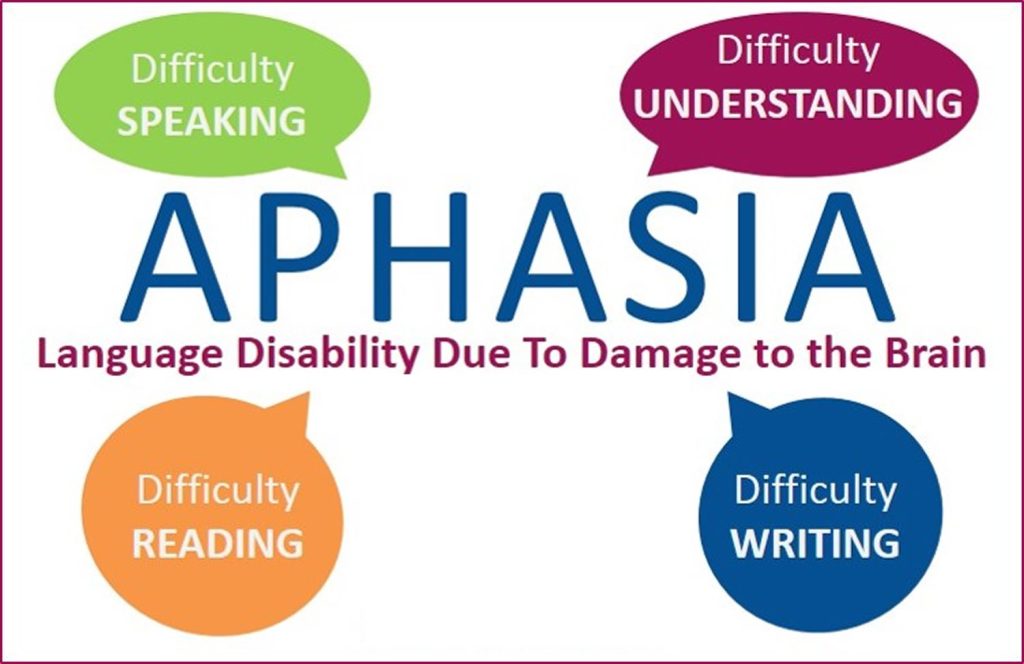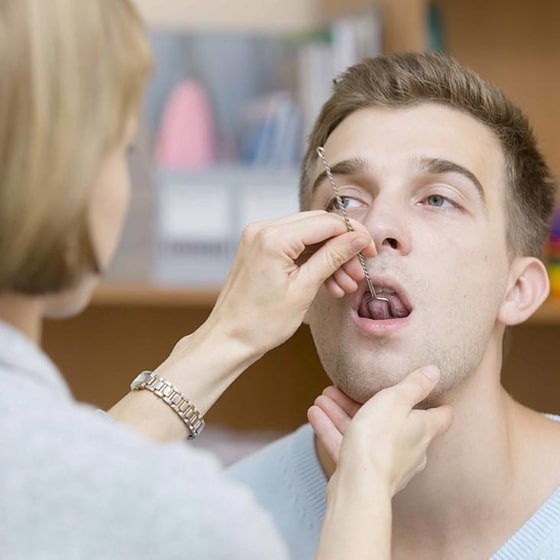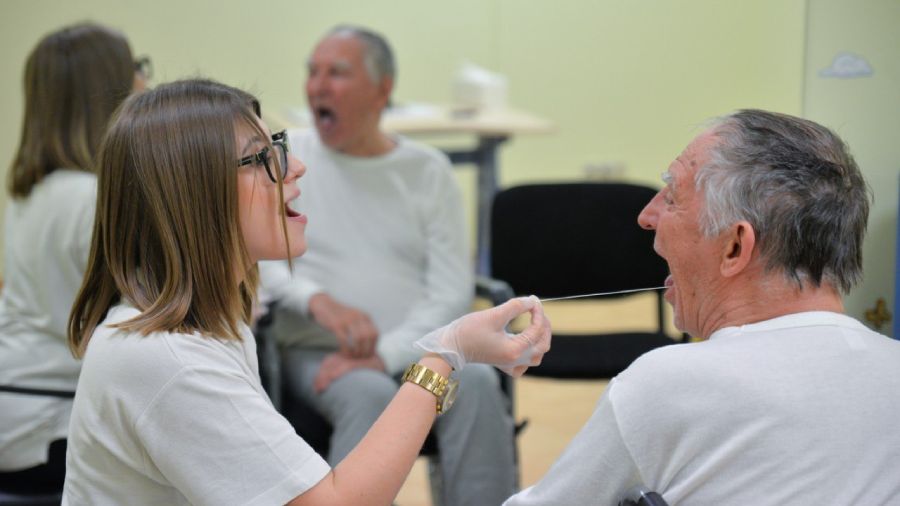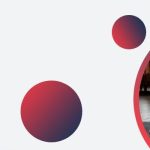Speech impairment – aphasia and dysarthria – an impaired ability to speak and understand speech. Aphasia and dysarthria are the result of damage to the brain structures responsible for speech.

Aphasia
Aphasia is an impairment of the motor and sensory link of speech (total aphasia). Impairment of the motor link is manifested by a patient’s loss of the ability to normal speech, he speaks very slowly, in separate phrases, sounds, and sometimes is not capable of speech at all. Impairment of the sensory link is related to perception of speech: a patient does not understand the addressed speech, does not understand what a conversation is about. Some patients, however, retain the ability to respond to significant personal designations (names, places). Aphasia is usually combined with alexia (inability to read), acalculia (inability to count), agraphia (inability to write), which together make it almost impossible to establish contact with any patient.
The classification distinguishes several types of aphasia. Let’s take a closer look at each of them.
Broca’s aphasia (motor aphasia)
This type of aphasia is characterized by laconic, slurred speech, as well as frequent repetition of phrases. The patient does not fully respond to appeals, but this link of speech after a stroke is quickly restored. Patients also cannot write. Motor aphasia is often associated with hemiparesis (weakness in the limbs on one side of the body) and hemihypesthesia (loss of sensation in the limbs on one side of the body).
Kozhevnikov-Wernicke aphasia (sensory aphasia)
This type of aphasia is characterized by impaired understanding of oral and written speech. At the same time, the patient remains capable of speech, intonation is preserved, but others cannot understand him – instead of normal words and sentences, the patient pronounces meaningless sounds that sound like words, and also invents new ones. The patient himself often does not realize that something is wrong. Sensory aphasia is often combined with hemianopsia – loss of visual fields.
Total sensorimotor aphasia
Total sensorimotor aphasia is a type of aphasia, which is characterized by a combination of symptoms of motor and sensory aphasia. Total aphasia is usually combined with hemiparesis, hemihypesthesia and hemianopsia.
Dynamic aphasia (transcortical motor aphasia)
Transcortical motor aphasia is similar to Broca’s motor aphasia. The patient’s understanding of speech (that is, the sensory component of speech) is preserved in dynamic aphasia. The main difference between dynamic aphasia and motor aphasia is preserved repeated speech: the patient can, on request, repeat words and phrases spoken by a doctor or another person.
Transcortical sensory aphasia
Transcortical sensory aphasia – resembles Wernicke-Kozhevnikov aphasia, but the symptoms are less pronounced: the sensory component of speech is impaired. In this condition, the speech of patients is fast, but of little content. In contrast to Wernicke’s sensory aphasia, repeated speech is preserved in transcortical sensory aphasia: at the request of the doctor, the patient can repeat the spoken phrases after him. Patients can read aloud, but without understanding the meaning of what they read.
Transcortical mixed aphasia
This type of aphasia combines the signs of transcortical motor and sensory aphasia, while maintaining the ability to repeat words and phrases after a physician. Comprehension of written and spoken language also deteriorates significantly.
Amnestic aphasia
This type of aphasia is characterized by the following phenomenon: patients cannot name a word or an object, while they can describe the meaning and functions of an object. In this regard, speech is characterized by pauses, selection of words, their replacement. Repetition and understanding of speech are not impaired.
Alexia without agraphia
With this type of aphasia, patients can write, but cannot read. Comprehension of oral speech is preserved, spontaneous speech is not changed.

Dysarthria
Dysarthria –is an impairment of speech pronunciation. This disorder is related to an impairment of innervation of facial muscles responsible for speech formation. Dysarthria is manifested by slurred, fuzzy speech “into the nose”, salivation. Speech is quiet, deaf, monotonous.
According to the location of the lesion, bulbar dysarthria, pseudobulbar dysarthria, subcortical dysarthria, cerebellar dysarthria, and cortical dysarthria are distinguished.
Bulbar dysarthria
This disorder occurs when the nuclei of the cranial nerves (glossopharyngeal, vagus, hypoglossal, facial, trigeminal) are damaged. These nuclei are located in the medulla oblongata and are often affected in a stroke. Normally, the above nerves are responsible for the innervation of the facial muscles. When they are damaged, the following symptoms appear: lack of facial expressions (amimia), sucking, swallowing, salivation disorders. The speech is slurred, poorly articulated, the voice is quiet, nasal.
Pseudobulbar dysarthria
This type of dysarthria develops with damage to the cortical-nuclear pathways. Manifested by muscle hypertonicity and spasm – the tip of the tongue cannot be lifted up and taken to the sides; characterized by profuse salivation, impaired swallowing. Speech is also slurred, slightly nasal.
Subcortical dysarthria
It is related with damage to the subcortical nuclei of the brain. The presence of hyperkinesia is characteristic – involuntary forced movements of facial muscles, which increase when trying to speak. Sometimes involuntarily patients can produce guttural cries. The patient’s speech may be fast, slow, or stuttering.
Cerebellar dysarthria
This type of dysarthria is associated with damage to the cerebellum. It is manifested by typical cerebellar dysfunctions – jerky, chanted speech, separate cries in combination with a shaky gait, awkwardness of movements.
Cortical dysarthria
It is related to damage to the cerebral cortex and manifested by symptoms similar to motor aphasia, however, unlike the second, with cortical dysarthria there are no violations of writing, reading and speech understanding.
Correction of dysarthria and aphasia
An important component of rehabilitation is the correction of dysarthria and aphasia. At the initial stage of treatment, the participation of a speech therapist is always necessary. In speech therapy classes for the correction of dysarthria and aphasia, they develop and restore:

- fine motor skills (complex of gymnastic exercises)
- motility of the speech apparatus (speech therapy massage, articulatory gymnastics)
- speech breathing (breathing exercises)
- voices (restoration of voice properties with the help of orthophonic exercises)
Specialists correct dysgraphia and dyslexia, which allows to restore the lost functions of reading and writing.
Rehabilitation after a stroke is performed comprehensively, in several stages for the gradual restoration of functions and the return to a normal full life.

Rehabilitation methods include such methods as:
-
Passive kinesiotherapy – movement therapy, a complex system of exercises using special devices.
-
Physiotherapy.
-
Manual therapy, massage.
-
Ergotherapy or occupational therapy – is indicated for the restoration of everyday functions, helps any patient to restore lost skills, including fine motor skills.
GHRS Group exercises for rehabilitation of the patients with Aphasia, Dysarthria
Oral-motor exercises
Oral-motor skills relate to the correct functioning and use of facial muscles (lips, jaw, tongue, cheeks and palate) for verbal communication and verbal communication and swallowing. Adequate oral-motor skills in all individuals are important for verbal communication and safe swallowing. Normal oral-motor development begins at the fetal stage and continues to develop with age. An adult should safely consume liquids and solids orally and be able to use verbal language to communicate.
Insufficient or inadequate oral-motor skills can lead to poor verbal communication and swallowing difficulties. Patients diagnosed with dysphagia, dysarthria, speech apraxia, post-stroke aphasia and other neurological conditions are manifested by inadequate functioning of the muscles of the mouth. Oral-motor exercises help to improve strength, range of motion, and coordination of the mouth muscles, which contributes to better speech and swallowing function.
The following are the skills and abilities provided by the function of all facial muscles:
-
Awareness, perception
-
Strength
-
Coordination
-
Movement
-
Endurance
Video: “rehabilitation of the patients with Aphasia, Dysarthria“
APHASIA. DYSARTHRIA. SET №1:TONGUE EXERCISES
For additional information about the rehabilitation of the patients with Aphasia, Dysarthria you can watch a video demonstrating exercises and rehabilitation recommendations.
What is the purpose of oral-motor exercises?
-
to increase awareness of the mouth functioning
-
normalize sensitivity to stimulation in the mouth area
-
to improve normal movements of the mouth muscles by suppressing abnormal reflexes
-
improve the strength and range of action of the mouth muscles
-
to improve oral muscle coordination
How and when should you exercise?
The exercises below are easy to do. Try to exercise in your free time. To develop the right set of exercises, it is advisable to consult individually a rehabilitation specialist and a speech therapist, to select exercises in accordance with the medical problem and the patient’s condition. It is recommended to use a mirror to get visual feedback and strengthen muscle response. If a person is unable to perform a particular oral-motor exercise listed below, this is an indication to train and strengthen that particular muscle group. These exercises can be repeated three to six times a day until skills improve. Each person learns and trains at their own pace, and progress can be seen over weeks, months, and sometimes even longer.
In this section, sets of exercises are developed by the 4 main directions and muscle groups, 5-th direction – a set of respiratory-oral, articulatory exercises.
All exercises are made in a sitting position, preferably opposite the mirror.

CHECK OUT THE DEMO VERSION OF OUR EXERCISES FOR THE PATIENS WITH APHASIA, DYSARTHRIS ON YOUTUBE.
Our website presents the following sets of exercises for rehabilitation of the patients with Aphasia, Dysarthria:



